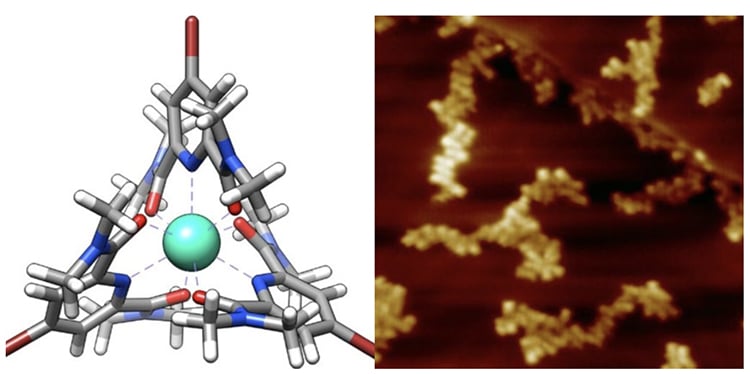
Supramolecular assemblies of six rubidium and one iron atom. (Photo: Ajayi et al./Nature)
For the average person, X-ray specs might still be the stuff of superhero novels; but for scientists who regularly work with X-rays, the technology just took a huge leap forward. X-rays are electromagnetic radiation with higher energy “content” than our visible light. They pass through objects which, depending on the material, absorb different amounts of radiation. This produces data often presented as images, for example, of broken bones. Now, a team of scientists led by Professor Saw Wai Hla, from the University of Ohio and the Argonne National Laboratory, have managed to X-ray a single atom—an incredible technological leap with huge ramifications for materials science and perhaps even medicine.
The study, published in Nature, explains that researchers achieved this feat with a technology called synchrotron X-ray. This technique involves accelerating electrons to make an extremely high energy source. Before this most recent study, only an attogram (10,000 atoms or more) was possible to image given the difficulty of finding a receptor that could register smaller X-ray signals. The team solved this problem by creating a specialized probe which had to be placed extremely close to the atoms in question. This is known as synchrotron X-ray scanning tunneling microscopy or SX-STM. By measuring the electrons excited by the X-rays, the probe could identify which atom it was.
The team tested this by placing an iron atom and an atom of terbium into supramolecular assemblies including other atoms and tiny “building blocks.” In addition to X-raying the single atom effectively, they learned about its chemical properties in new ways. “We have detected the chemical states of individual atoms as well,” Professor Hla explains. “By comparing the chemical states of an iron atom and a terbium atom inside respective molecular hosts, we find that the terbium atom, a rare-earth metal, is rather isolated and does not change its chemical state while the iron atom strongly interacts with its surrounding.”
“The technique used, and concept proven in this study, broke new ground in X-ray science and nanoscale studies,” says Tolulope Michael Ajayi, first author of the paper whose Ph.D. thesis work advanced this discovery. “More so, using X-rays to detect and characterize individual atoms could revolutionize research and give birth to new technologies in areas such as quantum information and the detection of trace elements in environmental and medical research, to name a few. This achievement also opens the road for advanced materials science instrumentation.”
Now, the team can turn their atomically focused eyes towards other elements, learning so much more about the tiny building blocks of our world.
Scientists have used cutting-edge technology to capture an X-ray of a single atom for the first time ever.

Rubidium atoms are blue and the iron atom is red. (Photo: Ajayi et al./Nature)
The team created new technology to allow the X-ray of something so small, and were able to identify the elements at hand.

On the left is a terbium supramolecular assembly (terbium is cyan, bromine is blue, oxygen is red). On the right is an SX-STM image of the terbium supramolecular assemblies. (Photo: Ajayi et al./Nature)
h/t: [IFL Science, Science Alert]
Related Articles:
Researchers Develop mRNA Treatment That Could Combat a Peanut Allergy
Israeli Hospital Develops Blood Cancer Treatment With a 90% Success Rate
Can You Smell When Rain Is Coming? Science Says Some People Can and Some Can’t
Scientists Use Brain Implants to Help Patients Regain Their Independence
